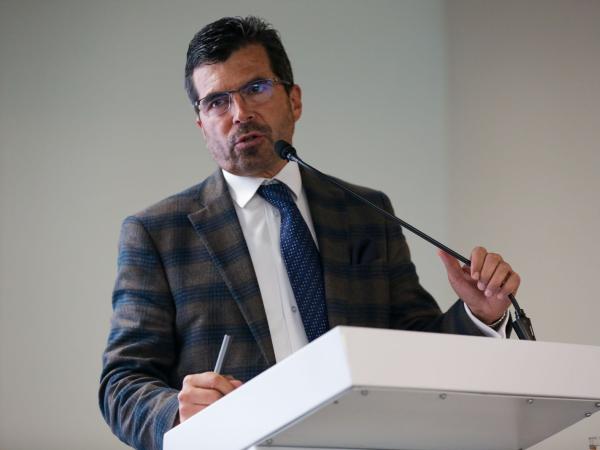The Roil and gas reserves fell in 2023, showed the most recent Resources and Reserves Report of the National Hydrocarbons Agency (ANH). The case of gas is the most worrying, since from one year to the next, they fell 15.7%, going from 2,817 cubic gigapies in 2022 to 2,373 cubic gigapies at the end of 2023.
(In context: Gas reserves fell to 6.1 years and oil reserves to 7.1 years in 2023, according to the ANH)
He Ministry of Mines and Energy indicated that there is a package of measures in progress that work is being done so that the country remains self-sufficient although once again ruled out the granting of new contracts. Experts asked to reconsider this measure and be more practical with some of the strategies.
In terms of the reserve life index, a drop of 7.2 years was seen. reserves – production ratio to be 6.1 at the end of 2023. This was explained by a consumption that was not compensated with new additions.
The Agency noted that last year Not only was there no replacement, but 58 cubic gigapies were lost. compared to the year directly before, which is the second time in the last eight years that this has happened, after in 2019 there was a contraction of 228 gigapies.
(Read: With new findings, the ANH hopes to improve gas reserves at the end of this year)
“The results represent an urgent call for increase exploratory activity and expedite development of these resources. It is the only alternative to increase reserves and extend self-sufficiency“said Luz Stella Murgas, president of Naturgas.
In the case of oil, the contraction in proven reserves was a little less marked, but it also fell. The data in 2022 was 2,073 million barrels and for 2023 fell 2.6% reaching 2,019 million barrels.
This means that the life index went from 7.5 years to 7.1 years, with a replacement of 229 million barrels, which according to Orlando Velandia, means that for every 5 barrels of oil that were consumed, another 4.05 were replaced.
(We suggest: Between January and April active oil drills fell 21.2% compared to 2023)
Orlando Velandia, president of the ANH
César Melgarejo / Portfolio
During the press conference in which these data were presented, the Minister of Mines and Energy, Andrés Camacho, pointed out that Government policy is related to the efficiency of contracts that have already been signedso granting new ones is not contemplated.
In fact, he pointed out that the portfolio, together with The Agency is working on issues such as monitoring contingencies in resources that have already been found and that have not been able to be put on the market due to economic, legal, regulatory factors, among others.
(Also: How viable is it for Colombia to have oil production of one million barrels?)
Velandia pointed out that at the end of the year, Potentially recoverable contingent oil resources (those closest to reserves) reached 2,783 million barrels, above the 2,384 million that the country had in 2022.
Just like in oilIn gas, there was an increase in the quota data, since it went from 5.8 cubic terapies in 2022 to 7.5 terapies At the end of last year, 29% more than the previous year. “If today we could recover the reserves we would have a very different report. But this is a first step,” said Velandia.
According to the president of the entity, The main factor that explains contingencies is economic (39%), followed by technical issues (35%) and legal and/or contractual issues (24%). This is especially marked in offshore resources, that is, in the sea, which 98% are facing these contingencies.
(You may be interested: The Government is preparing to squeeze ‘lazy’ oil areas in search of increasing reserves)

Andrés Camacho, Minister of Mines and Energy
César Melgarejo / Portfolio
Among the measures that are being promoted by the portfolio is the enabling multiphase oil pipelines“with the purpose of take advantage of current infrastructure, ensure the increase of gas reservesas well as marketable gas derived from contracts and agreements”.
Another of the points highlighted by Velandia is that with the volume of discoveries that have been announced in recent years, we are working on tools that give them greater flexibility to make your commerciality declaration and thus improve this year’s data.
The Minister of Finance, Ricardo Bonilla, stated that the Government’s goal is bring oil production from 777.2 thousand barrels per day (kbpd) to one millionwhich poses even more challenges, since it would imply a greater rate of decrease in the reserves-to-production ratio.
ACP calculations indicate that if the country were to produce at this level, the life index of the reserves would fall to just over 5 years, exacerbating the need to incorporate new molecules of this hydrocarbon.
Now, one of the concerns of the sector is that The measures do not seem to be sufficient to maintain self-sufficiency in the medium term both in the case of oil and gas. “It is necessary to ensure that this level does not continue to fall, even more so if what we want is to increase production.“said Frank Pearl, president of the Colombian Oil and Gas Association (ACP).
(Also: The measures that Minenergía will take to reverse the fall in hydrocarbon reserves)
“To the extent that there are more opportunities to increase reserves, there may be greater risk, especially in a business with high uncertainty.“explained Julio César Vera, president of Xua Energy, pointing out that the country should analyze the possibility of granting new contracts.
He highlighted that The country has good contingent resources (which cannot be put on land, but have high potential to be reserves) as well as prospective, which is a good indicator that there are hydrocarbons that can be put on the market.
In this regard, Pearl said that taking into account the drop in the reserves data, the incorporation of new reserves is urgently needed to replenish what is being produced annually, either from new discoveries or by moving contingent resources to the reserves.

Petroleum
EL TIEMPO Archive
For his part, the former Minister of Mines and Energy, Amylkar Acosta said that “The figures do not lie, what this ANH report shows is that in terms of self-sufficiency of hydrocarbons it is going from brown to dark and this while the specter of crude oil imports and greater natural gas imports continues to haunt us.”.
(Read: Frontera Energy analyzes the divestment of some of its assets in Colombia)
For this reason he pointed out that the policy should promote new exploration and production contracts of hydrocarbons that remove this possibility from the panorama.
Although the Government has sought the possibility of unblocking contracts that are suspended, This policy has not had the expected result and has not allowed the integration of new resources. Additionally, dOf the 302 contracts that have been signed, there are 39 suspended, 57 in the process of termination and 95 in closure or liquidation, which reduces the room for maneuver.
Vera said that Although the Government’s strategies are good and necessary, the truth is that the country should be more practical regarding concrete plans for example for enhanced recovery. He said strategies must be found to take these initiatives to the ground.
“It is a priority that appropriate measures be taken to maximize exploration as the main alternative to increase reserves and thereby increase the probability of production.“Pearl concluded, pointing out that the measures that have been presented are positive, although it must be taken into account that the “economic viability of the projects must be guaranteed, mainly in relation to the increase in production costs and the tax burden. “.
DANIELA MORALES SOLER
Portfolio Journalist















Add Comment